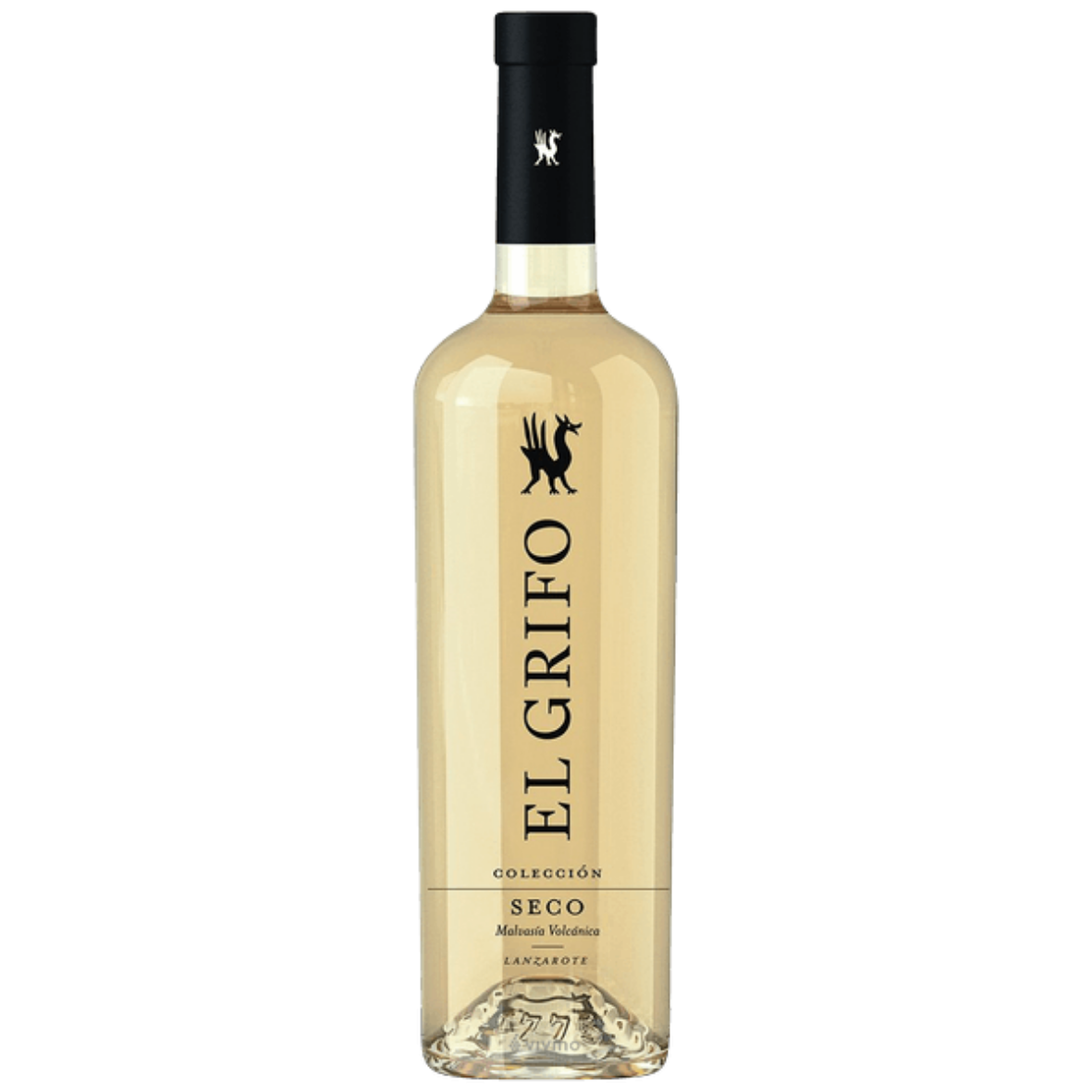Lanzarote, one of the Canary islands off the coast of West Africa administered by Spain, is known for its year-round warm weather (150mm of rain per year), beaches and volcanic landscape.
100% Malvasía Volcánica (pre-phylloxera) from the oldest winery at Lanzarote (Canary Islands). The covered wine press dates from 1775, as can be seen from the inscription on the foundation, and was raised by the Venerable Beneficiary of the parochial church of Teguise Don Antonio de Torres Ribera. El Grifo, currently a 40-hectare plantation, was one of his properties.
After the eruptions of 1730-1736, the central part of the island, the most fertile, was covered by lava and volcanic ash. A short time later they began planting grapevines and fruit trees, either by removing part of the volcanic ash or by making holes through the lava (“chabocos”), in order to reach the soil apt for cultivation. All the work is done by hand, it is amazing!
Antonio de Torres Ribera inherited some of the fields of El Grifo, which his parents had owned before the eruptions of 1730, and went on to complete the plantation and planted the grapevines. He also built, apart from the press, the primitive bodega (which is currently the museum) and the house.
Afterwards, the de Castro family owned El Grifo between 1820 and 1880, approximately 60 years and three generations. Finally, the current family have been owners since 1880 over five generations, taking into account Gonzalo García Durán (who owned lands which are now part of El Grifo), father of Manuel García Durán, great great-grandfather and great-grandfather respectively, of the current owners. They built the current bodega next to the older buildings, which have been preserved as a museum.
The Phylloxera plague which affected Europe did not reach the Canary Islands, thus these varietals were preserved. The Lanzarote varieties arrived, after the eruptions of the XVIII century, from other islands in the archipelago. These had arrived in the archipelago at the dawn of the XVI century from Andalucía. The majority of the varieties described in the 1877 report by engineer Barroso written for the National Winegrowers Congress of 1878 have been maintained in Lanzarote. Some are exclusive to Lanzarote, such as the Malvasía Volcánica and the Listán Negro; others, such as the Vijariego, have become endemic, due to the fact that it has practically disappeared from its place of origin, Andalucía.
The absence of Phylloxera permits ground level cultivation, without the need for grafting rootstock, as it has always been grown.

